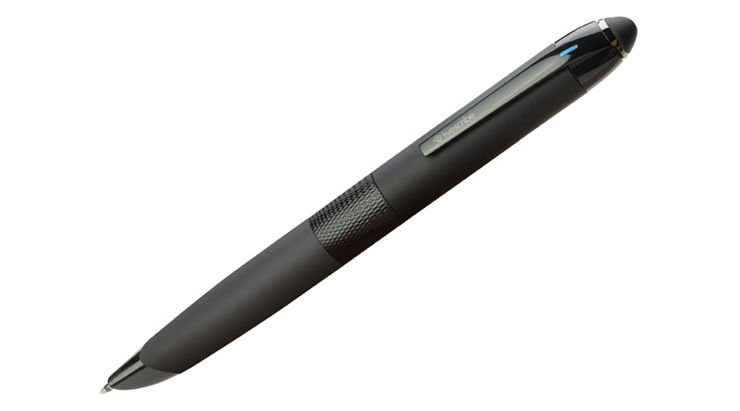Digital Pen - Is it time to digitize handwriting?
With the advent of modern computer technology, many technicians and inventors started developing not only brand new ways of managing text, graphics, and motion data input into computer systems but also incorporating the new evolving technologies into tried and true analog input systems, making them more versatile, useful and precise than ever before. One such technology focused on enhancing the use of one of the oldest and most important tools modern humanity ever created – a five millennia-old writing pen. It is important to note that digital pens are not styluses. Stylus is an inert pencil-like item that provides data to capacitive or resistive screens that then use that pressure data to recreate the digital form of the user's drawing. Digital Pens, on the other hand, are built around regular ink cartridges, with onboard sensors (pressure sensitivity, IR cameras, accelerometers, positional sensors, computer connectivity features, input buttons, memory, battery, indicator lights, vibrator motor, and more) that can record users drawings, store them onboard or sync them with the nearby computer.
Digital pens have many advantages over traditional pens, enabling users to easily record their text entries, drawings, diagrams, and quick notes and transfer them to a computer where they can be used as-is or in many different ways to enhance workflow, simplify work procedures, and more. Data entry with digital pens can be recorded into onboard storage and synced with the PC or Mac at a later time via wireless or USB cable connection or can be synced with a desktop, laptop, and mobile devices instantly (with live preview of the drawings of text on the screen), but also interpreted on the fly using various computer software for handwritten text recognition (Optical character recognition – OCR) and used for real-time text entry such as note writing, filling out forms, capturing user signatures, etc.
The digital pen records the users writing and drawing using several techniques; some are used to monitor directly what is user writing while other hardware and services monitor secondary features of the drawing such as the amount of pressure the user is forcing on the paper, the angle of the pen and others. The most common technology used to monitor what is written is infrared cameras. They require a user to use special digital paper with either small bumps that can be detected by the pen's sensitive hardware or a dense array of small black dots that reflect the different amounts of infrared light captured by the pen's onboard camera. The most common digital paper utilizes Anoto technology, which features a pattern of very small dots forming a two-dimensional barcode. This digital paper (or sometimes called “interactive paper”) technology has become widespread not only because it proved itself very effective in day-to-day use for both writing and drawing but also because users can create their digital paper by using basic home printers that can achieve printing resolution of Anoto dot pattern of at least 600 DPI. Many pens have onboard storage that can record the content of more than 50 pages. In contrast, other ones demand the pan to be constantly in wired or wireless connection with a PC or mobile device (usually professional models that monitor the position and angle of the pen to a very high degree).
Popular Digital Pens
Here are some examples of popular digital pens:
Wacom Bamboo Spark – This digital pen distinguishes itself from the competition by being able to be used on any paper surface. It achieves this feat with a high-end sensor array inside the tip of the pen that monitors what the user is writing. The services suite allows users to review the timeline of their writing and drawing, seeing their progress made line by line. It can store up to 100 pages in its onboard memory.
Wacom Inkling Digital Sketch Pen - Earlier digital pen product from Wacom, combining the great performance and services that make this product aimed at visual artists who want to transfer their drawings easily into image editing suites on PC and Mac.
Neo smartpen N2 – One of the best IR camera-based digital pens ever made that makes its slightly bulky (but beautiful) metal design worth it. It can detect writing only on standard Anoto dot pattern paper. Still, it can store up to 1000 pages of handwritten notes in its memory, detect 256 stages of pen pressure on the paper, and include interchangeable ink cartridges of 8 different colors and three thickness options.
Livescribe 3– A highly versatile modern digital pen that can work with paper with an Anoto dot pattern (users can print out their own, but sadly only if they use color ink cartridges provided by Livescribe). It is bulky and can take a bit to get used to its design, but features such as recording sound while scribbling can make it incredibly useful during your daily work or drawing sessions.
Moleskine Smart Writing Set - This precise and elegant digital pen with 1000 pages on onboard storage is part of a complete set of notebooks that enable users to access additional features that are impossible with other pen manufacturers. For example, since this digital pen only works with proprietary Moleskine notebooks, it can detect different dot patterns on each notebook page, which enables writing software always to know on which page the user is currently.
BLCK INK - Even though it is bulkier than its competitors, this digital pen represents a viable piece of hardware for artists, providing a real ink pen that can draw stunning images on real paper and accurate sensors for the capture of that same high-quality images into digital form. Its communication services enable instant sharing of drawings online and quick data sync with home and mobile devices.
